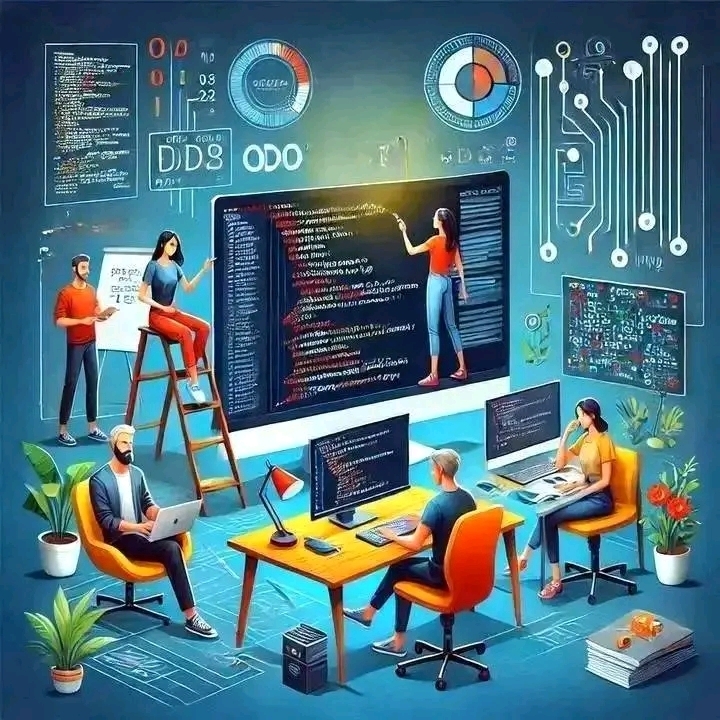The Future of Learning is Interactive—Are You Ready?
Consider this: A student logs on to an online learning platform. Instead of drab, long-winded lectures, they find an interactive, game-like, and personalized learning experience. They navigate challenges, earn rewards, and receive immediate feedback—all while actually having fun.
This isn’t just the future—it’s the present of online education. With the rise of AI, gamification, and microlearning, interactive learning platforms are transforming how people acquire knowledge. If you’re an educator, developer, or entrepreneur, understanding how to build one can open up endless opportunities.
In this post, I’ll share key strategies, technologies, and best practices for building an engaging learning platform that keeps users hooked.
Why Interactive Learning Platforms Are a Game-Changer
Traditional e-learning platforms tend to lose learners' interest and have high dropout rates. Learners get bored, perplexed, or distracted. Interactive learning addresses this by employing:
✅ Gamification – Points, badges, leaderboards, and challenges make learning fun.
✅ Personalized Learning Paths – AI-driven recommendations adjust to a user's path.
✅ Real-time Feedback – Instant corrections keep learners on track.
✅ Social Learning – Peer conversations, group work, and forums boost retention.
✅ Microlearning – Learning in small bites maintains focus.
Companies like Duolingo, Khan Academy, and Coursera have used these strategies to turn online learning into a massive success. Now, let's find out how you can do it as well.
Top Strategies for Building an Engaging Learning Platform
- Gamify the Experience 🎮 Gamification is the most powerful driver of engagement. Building in features such as:
Points and rewards for completing lessons
Progress bars to see accomplishments
Leaderboards to encourage friendly competition
Streaks and daily goals for persistence
Example: Duolingo keeps users engaged with XP points, streaks, and friendly competition.
- AI-driven personalization 🤖 Not every learner learns at the same pace. AI-driven adaptive learning adjusts difficulty and content based on user behavior.
Use AI-driven quizzes to determine knowledge gaps.
Provide customized learning paths based on individual needs.
Offer real-time course and topic suggestions.
Example: Coursera suggests courses based on learning history and user activity.
- Social Learning & Collaboration 🤝 Individuals learn better when they collaborate with others. Integrate social elements such as:
Discussion forums and groups
Peer review and study groups
Live Q&A sessions with instructors
Example: Udemy allows students to ask questions and interact with instructors.
- Focus on Microlearning 📚 Instead of long, intimidating courses, break content into bite-sized lessons.
Use 5-10 minute video lessons
Add interactive quizzes after each module
Provide bite-sized daily challenges
Example: LinkedIn Learning provides short lessons that working professionals are able to complete quickly.
- Make it Mobile-Friendly 📱 More students consume course material on their mobiles than ever. Your site must be responsive and work well on all screen sizes.
Create a mobile-first UI
Ensure videos and quizzes are optimized for mobile phones
Make available offline access for convenience
Example: Khan Academy provides an easy-to-use mobile interface.
Technologies You Can Use
To bring your interactive platform into existence, explore these technologies:
🔹 Learning Management Systems (LMS): Moodle, Teachable, LearnDash
🔹 Gamification APIs: BadgeOS, Gametize
🔹AI-Powered Tools: ChatGPT, Google AI, IBM Watson
🔹 Interactive Video Platforms: H5P, Articulate 360
Final Thoughts: The Future of Learning is Here
Interactive learning platforms are transforming online learning, making it more interactive, personalized, and effective. As a developer, educator, or entrepreneur, embracing these strategies will set you apart.
What's one thing you'd like to have in an interactive learning platform? Let us know in the comments below! ⬇️




Top comments (1)
Some comments may only be visible to logged-in visitors. Sign in to view all comments.